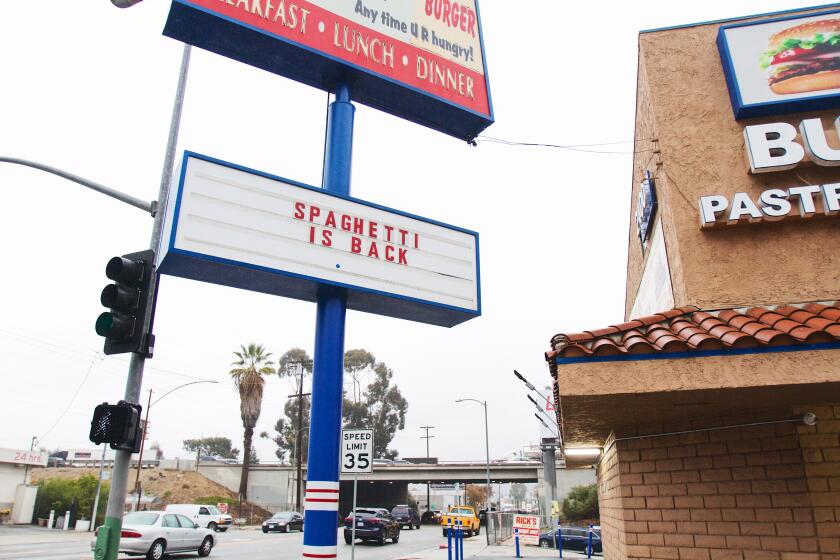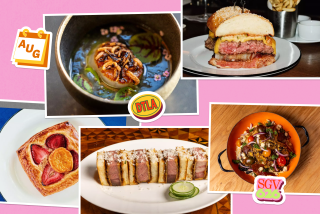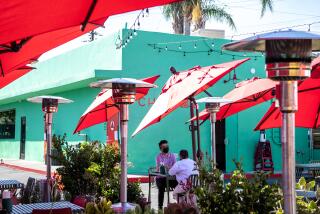Chick-fil-A isn’t the first to get backlash over a drive-through. It’s a California tradition
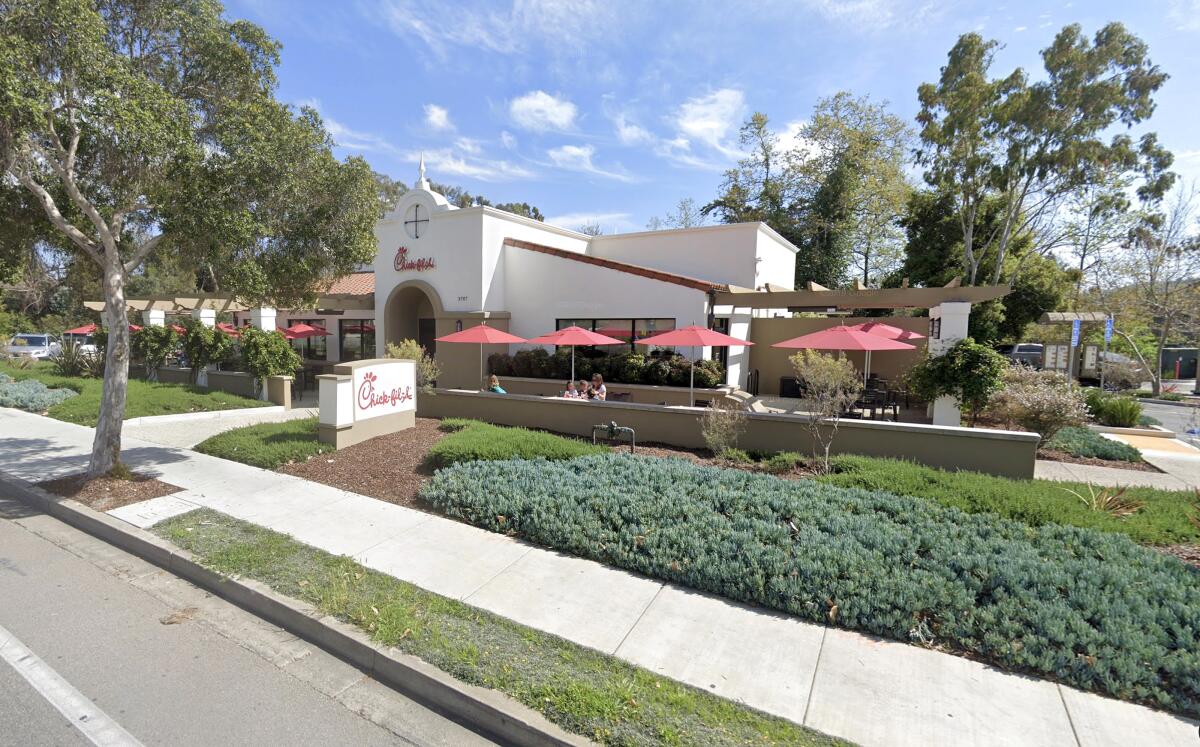
- Share via
Drive-through fast food has been part of Southern California life since the 1960s.
But it’s not always been a smooth ride. For decades, critics have complained the drive-through lanes create traffic woes, litter, noise and bad air quality.
The latest flare-up is in Santa Barbara, where officials are threatening to declare the Chick-fil-A on State Street a public nuisance because of traffic issues.
Santa Barbara residents want to see more than waffle fries from their local Chick-fil-A.
Officials and the restaurant say they hope to resolve the issues. And history would suggest it’s hard to bet against the drive-through. The businesses have grown dramatically over the years, successfully pushed back against calls for restrictions and regulations and gained even more cachet during the pandemic.
Here’s a look at the drive-through wars from the pages of The Times:
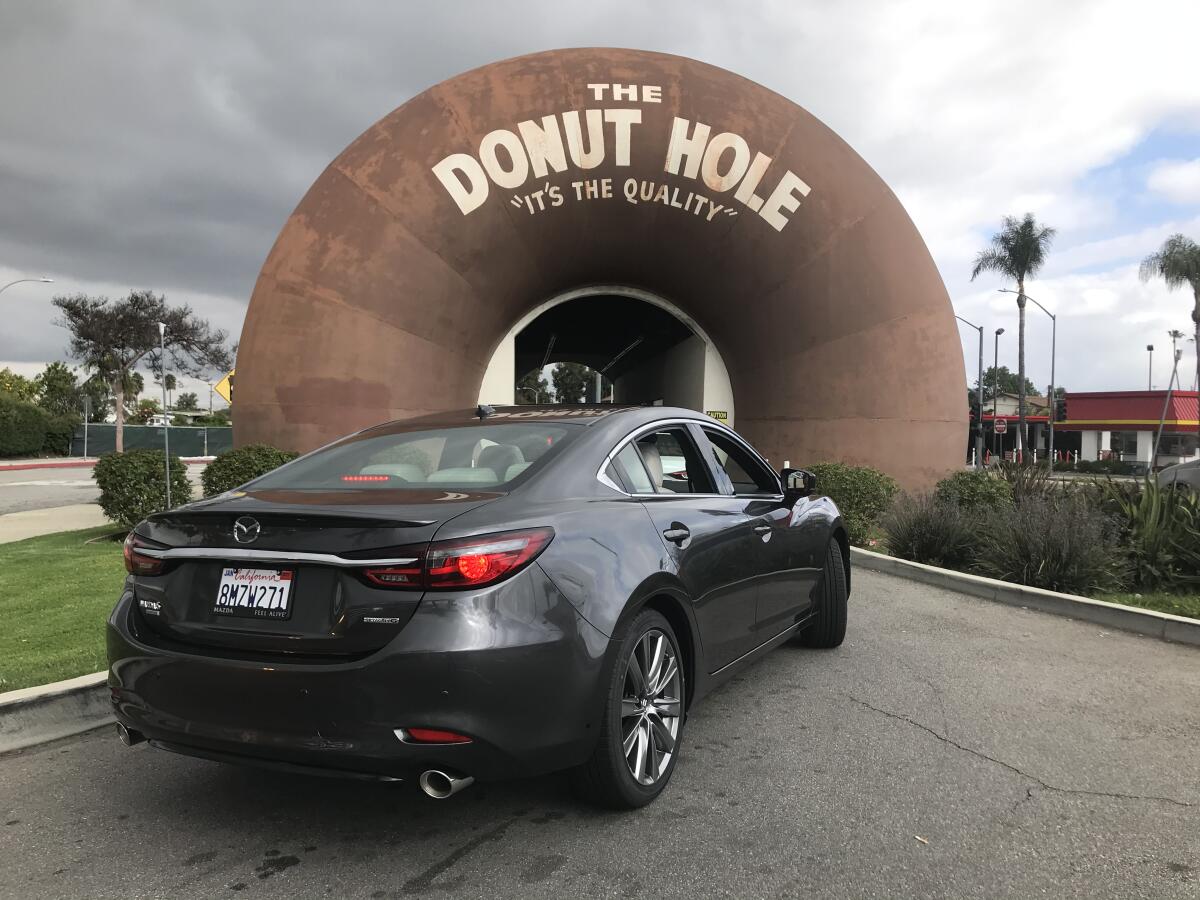
Beginnings
Fast food was not invented in Southern California, but it has strong roots here. Especially the hamburger.
As Times food writer Charles Perry reported in 2004, “It’s no accident that so many national burger chains began here. Bob’s Big Boy started in Glendale in 1936, McDonald’s in San Bernardino in 1948, Carl’s Jr. in Anaheim in 1956 and Johnny Rockets on Melrose Avenue in 1986. Fatburger ... was founded on the corner of San Vicente and South La Cienega boulevards in 1952.”
Many started as stands, then were drive-ins (where you waited in your car for service; A&W ended its last Southern California car-hop service in 2006), then eat-in restaurants and then drive-throughs, which saw a burst of popularity beginning in the 1970s and ’80s.
In 1991, McDonald’s opened the country’s first drive-through fast-food restaurant in a high-rise building on Central Avenue in Glendale.
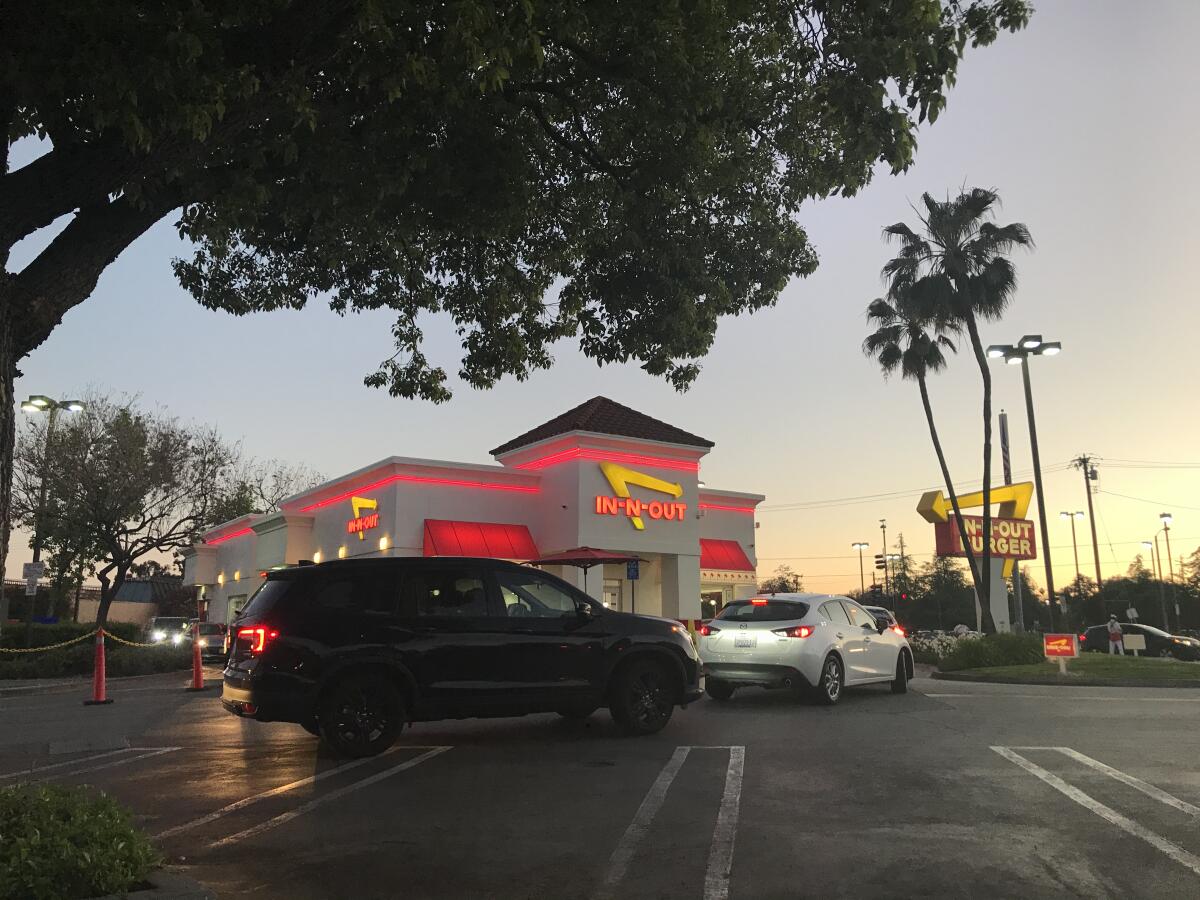
Backlash begins
The backlash against drive-throughs began in the 1990s, when complaints about traffic and noise prompted some cities to impose moratoriums on the lanes.
“From the 1960s, they defined the regional landscape, spreading nationwide. Now drive-through fast-food restaurants are joining strip malls and landfills in being cast as the land use pariahs of the 1990s,” The Times reported in 1996.
“The city of Sierra Madre this year banned drive-through restaurants. Last year, Burbank banned fast-food restaurants from operating drive-through windows 24 hours a day. Officials in South Pasadena and Newport Beach have imposed temporary bans while they draft tougher drive-through restrictions. And Los Angeles is starting to charge higher permit fees to new outlets to pay for traffic improvements.”
The complaints focused on more than traffic. Environmentalists and regulators said cars idling in long lines contributed to air pollution. Some residents at the time said the drive-throughs “could be a magnet for gangs, graffiti and panhandlers, a concern that restaurant representatives reject.”
One Seal Beach resident said he’d had enough. After listening to hundreds of drive-through orders from the nearby Jack in the Box, Jim Cook took action, The Times reported in 1996. When remodeling his house, Cook installed double-pane windows, 6-inch-thick walls and noise-blocking blinds on the side that faces the restaurant. The changes helped but did not eliminate the problem.
The cars keep rolling
Despite the backlash, drive-throughs have proved immensely popular. Some restaurants have added traffic mitigation measures and landscaping. Others have tried to improve traffic flow with multiple lanes, more workers and pickup stalls.
In 1998, Starbucks opened its first L.A. County drive-through in Hermosa Beach.
“I’m too lazy to park my car, take the keys out of the ignition and walk inside,” said one patron at the time.
“I’m on the phone a lot. I don’t want to get out of the car. I can just do that much more business while I’m in line,” said another. “Hey, it’s Southern California. Everyone needs an edge.”
Drive-throughs were a hit during the pandemic, and that has led more companies to seek additional locations, such as Sweetgreen and Shake Shack.
“The efforts run counter to recent urban planning thinking in which some cities seek to limit new drive-throughs to reduce auto emissions and litter, bring down obesity and improve pedestrian safety,” The Times reported last year.
Still, “drive-throughs and outdoor dining patios are rare bright spots in the restaurant industry, which has seen many businesses fold or endure a sustained battering from COVID-19 restrictions on communal dining and the reluctance of many diners to venture far from the safety of home.”
One Times critic reflected on the way drive-throughs have became a big part of the pandemic: “A trip to the In-N-Out on Lankershim Boulevard in North Hollywood revealed a drive-through line that not only went down the block but that also wrapped around it,” Carolina Miranda wrote in an essay in 2020. “The pandemic may have reduced drive times, but not the wait for a Double-Double (which seems to have doubled).”
Santa Barbara vs. Chick-fil-A
Chick-fil-A has operated a location in Santa Barbara since 2013 and draws a steady stream of customers whose vehicles block driveway entrances to nearby businesses, jam up the bicycle lane, block the sidewalk and force city buses and emergency vehicles to detour around the area, according to public planning reports. The city has been in talks with the store’s operators for years and in 2020, the city recommended Chick-fil-A hire a security firm to manage traffic at the location.
City officials say the drive-through line increases the risk for traffic collisions and injuries to pedestrians. A city traffic report said that, at its peak, the drive-through line can block one lane of State Street for as long as 90 minutes on the weekdays and as long as 155 minutes on Saturdays.
On March 1, the Santa Barbara City Council weighed traffic reports and complaints from residents and a response from Chick-fil-A’s representatives.
The owner said he was committed to solutions. Past fixes have included adding extra drive-through lines, pushing online food orders and, in recent months, hiring a third-party firm to control the flow of traffic during peak hours. Chick-fil-A has also hired more employees inside its restaurant, posted signs to tell customers where to drive with a hotline number for customers to give their feedback. The restaurant is also looking into using a nearby parking lot for its employees’ cars, according to Chick-fil-A.
Drive-throughs are rare in Santa Barbara because the city banned the construction of new drive-through businesses more than 40 years ago. Chick-fil-A is grandfathered into its site, which was previously a Burger King drive-through that had nowhere near the same volume of traffic.
A lot went wrong this year, but at one Frogtown diner, at least spaghetti was back.
Brea vs. Raising Cane’s
In February, the Brea City Council reversed course on what was to be the first Raising Cane’s restaurant in town. Council members voted to rescind prior resolutions passed a year ago that paved the way for construction of a 22-car capacity drive-through restaurant at Gaslight Square, a shopping plaza along Imperial Highway but also 20 feet across the street from Laurel Elementary School.
Before the vote, the chain stated in a Feb. 7 letter to Brea City Manager Bill Gallardo that it “has determined not to proceed with the development of a Raising Cane’s restaurant on a portion of the shopping center known as Gaslight Square.”
The move and the vote came as part of a settlement between Raising Cane’s, the city and a community group known as Safer Avenues for Everyone, which challenged the planned location in court. The prospects of increased traffic and long lines so close to an elementary school and pedestrian traffic spurred residents into action.
“I’m relieved and thankful that Raising Cane’s has withdrawn,” said Diane Stites, a longtime Laurel Elementary volunteer and plaintiff in the suit. “We’ve said since the beginning that we’re not against development or Raising Cane’s.”
The resolution came more than a year after Brea residents started raising concerns about the proposed Raising Cane’s.
Times staff writer Nathan Solis and Times Community News writer Gabriel San Román contributed to this report.
More to Read
Sign up for Essential California
The most important California stories and recommendations in your inbox every morning.
You may occasionally receive promotional content from the Los Angeles Times.

